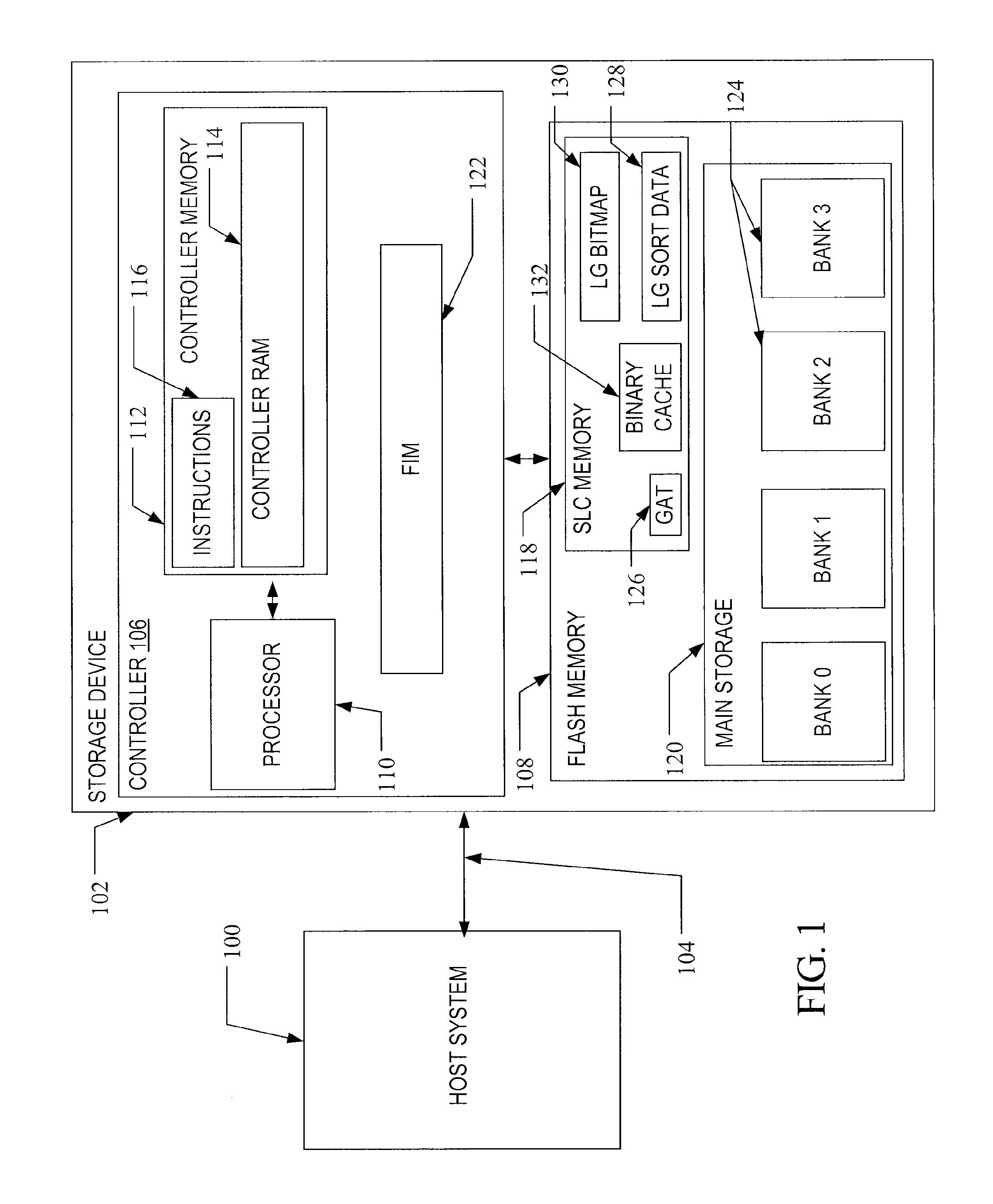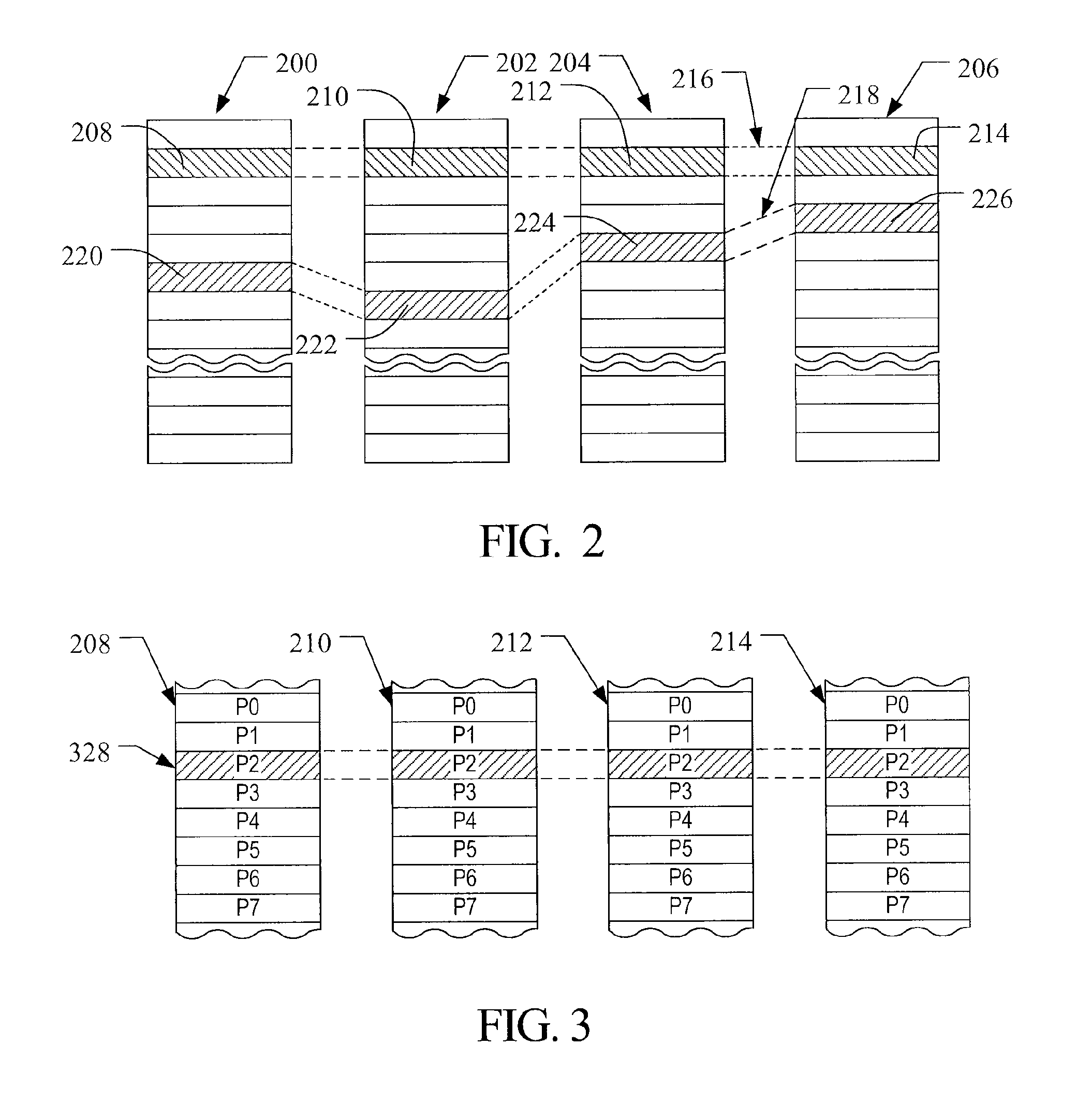Adaptive Logical Group Sorting to Prevent Drive Fragmentation
a technology of adaptive logical group and drive fragmentation, applied in the direction of instruments, computing, electric digital data processing, etc., can solve the problems of non-volatile memory system efficiency problems, delay in memory system response time,
- Summary
- Abstract
- Description
- Claims
- Application Information
AI Technical Summary
Benefits of technology
Problems solved by technology
Method used
Image
Examples
Embodiment Construction
[0015]A flash memory system suitable for use in implementing aspects of the invention is shown in FIG. 1. A host system 100 stores data into, and retrieves data from, a storage device 102. The storage device 102 may be embedded in the host system 100 or may exist in the form of a card or other removable drive, such as a solid state disk (SSD) that is removably connected to the host system 100 through a mechanical and electrical connector. The host system 100 may be any of a number of fixed or portable data handling devices, such as a personal computer, a mobile telephone, a personal digital assistant (PDA), or the like. The host system 100 communicates with the storage device over a communication channel 104.
[0016]The storage device 102 contains a controller 106 and a memory 108. As shown in FIG. 1, the controller 106 includes a processor 110 and a controller memory 112. The processor 110 may comprise a microprocessor, a microcontroller, an application specific integrated circuit (A...
PUM
 Login to View More
Login to View More Abstract
Description
Claims
Application Information
 Login to View More
Login to View More - R&D
- Intellectual Property
- Life Sciences
- Materials
- Tech Scout
- Unparalleled Data Quality
- Higher Quality Content
- 60% Fewer Hallucinations
Browse by: Latest US Patents, China's latest patents, Technical Efficacy Thesaurus, Application Domain, Technology Topic, Popular Technical Reports.
© 2025 PatSnap. All rights reserved.Legal|Privacy policy|Modern Slavery Act Transparency Statement|Sitemap|About US| Contact US: help@patsnap.com



